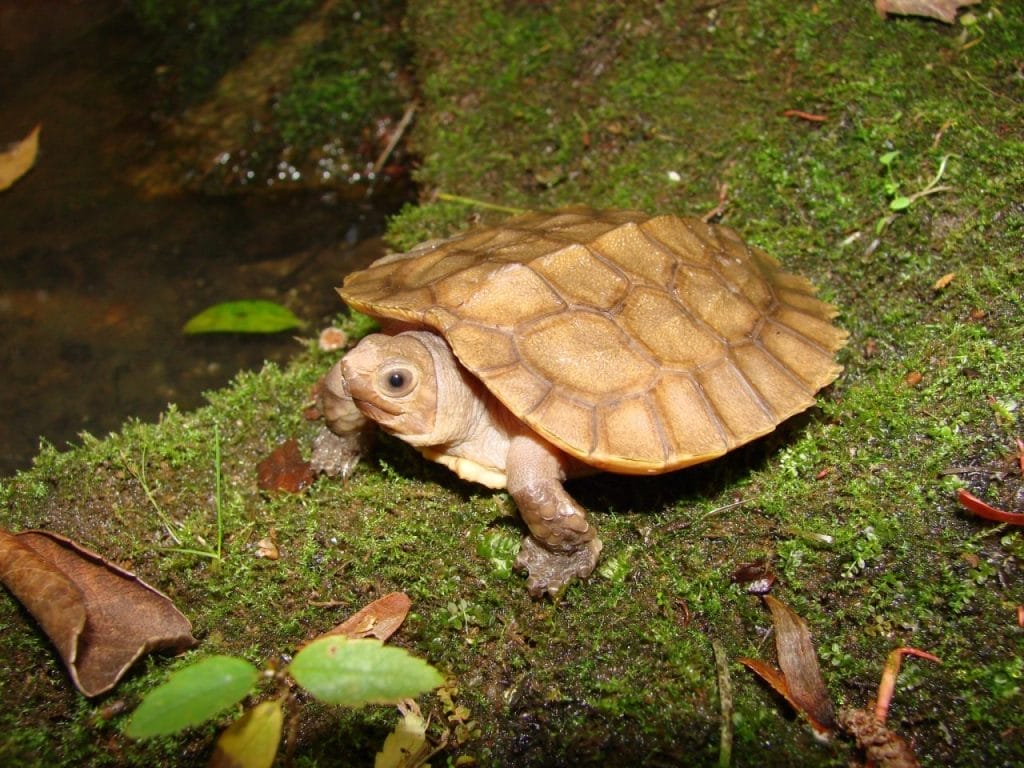Leucocephalon yuwonoi (Sulawesi Forest Turtle)
Home > Turtle Database > Leucocephalon yuwonoi (Sulawesi Forest Turtle)

Leucocephalon yuwonoi, known for its unique head coloring, is a freshwater turtle found in Sulawesi. It is not large but stands out due to its distinctive appearance and reclusive nature.
Native To These Regions
Sulawesi (Indonesia)Native Turtle Species Map – Find Turtles by Region
Scientific Classification
Kingdom: Animalia
Phylum: Chordata
Class: Reptilia
Order: Testudines
Family: Geoemydidae
Genus: Leucocephalon
Species: Leucocephalon yuwonoi
Common Names
Sulawesi forest turtle
This Hilarious Turtle Book Might Know Your Pet Better Than You Do
Let’s be real—most turtle care guides feel like reading a textbook written by a sleep-deprived zookeeper.
This one’s not that.
Told from the snarky point of view of a grumpy, judgmental turtle, 21 Turtle Truths You’ll Never Read in a Care Guide is packed with sarcasm, sass, and surprisingly useful insights.
And hey—you don’t have to commit to the whole thing just yet.
Grab 2 free truths from the ebook and get a taste of what your turtle really thinks about your setup, your food choices, and that weird plastic palm tree.
It’s funny, it’s honest, and if you’ve ever owned a turtle who glares at you like you’re the problem—you’ll feel seen.
Identification
- Description: Adults have a dark brown shell and a pale head. They are medium-sized, often reaching around 20 centimeters in length.
- Sexual Dimorphism: Females usually have flatter shells, while males have concave plastrons. Males may have slightly longer tails.
Native Origin and Distribution
Geographical Range: They live on the Indonesian island of Sulawesi, mainly in lowland forest areas.
Preferred Habitat
They prefer forested streams and small rivers with plenty of shade. They seek places with soft substrate for burrowing.
Behavior
- Feeding Habits: They eat a variety of foods, such as fruits, small invertebrates, and leafy greens. They feed both in and around the water.
- Predators: Their eggs and juveniles can be preyed upon by wild boar, snakes, and large birds.
Reproduction
- Breeding Season: The warmer months bring about increased mating activity. Females lay their eggs in hidden spots near water.
- Reproductive Method: They are oviparous, producing a small clutch of eggs.
Conservation
- Extinction Status: They are considered critically endangered.
- Threats: Habitat loss, hunting, and capture for the pet trade are the main threats.
- Conservation Measures: Breeding programs, protection of their habitat, and strict regulations on trade are needed.
Economic Importance
They have been collected for food and the pet trade. This demand has increased their risk of population decline.
Interesting Facts
Their pale head markings make them easy to recognize. They are shy and often hide under leaf litter or rocks.

About Author
Muntaseer Rahman started keeping pet turtles back in 2013. He also owns the largest Turtle & Tortoise Facebook community in Bangladesh. These days he is mostly active on Facebook.











